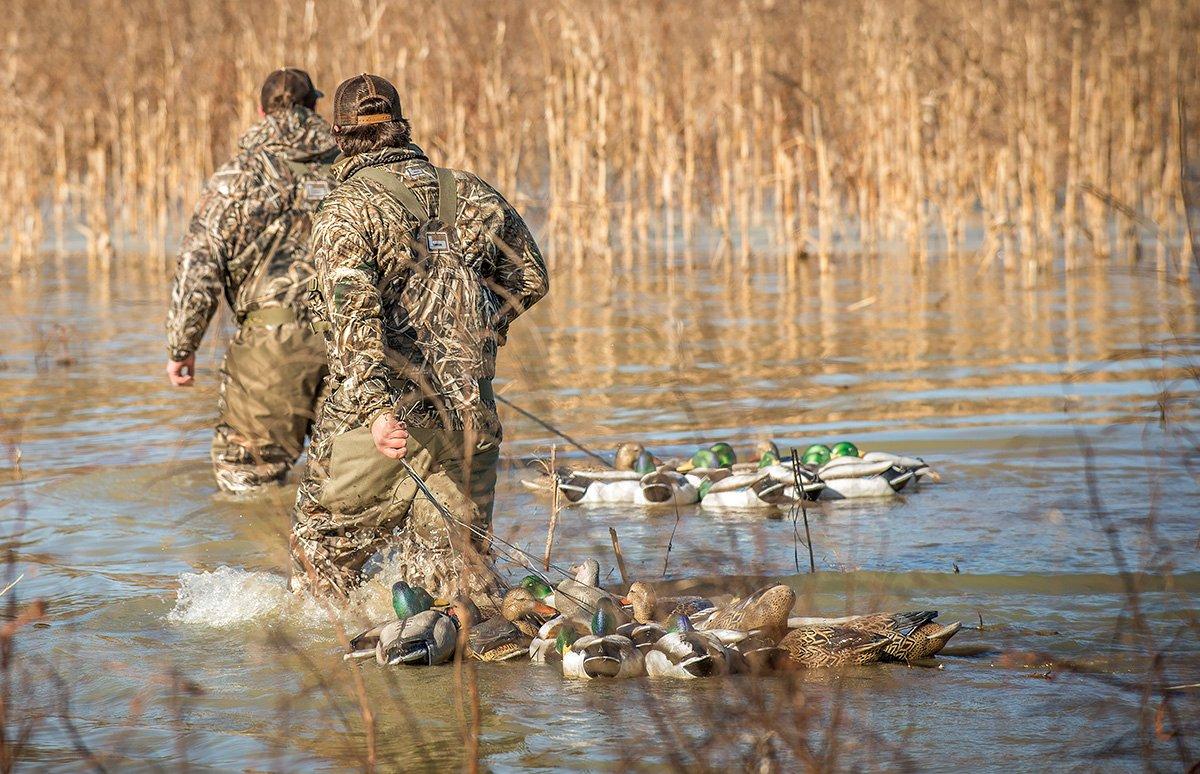Do you need six dozen duck decoys, or will 10 suffice? Learn when to set the full spread, and when to go light
If you've duck hunted long, you've probably, at some point, been drenched in sweat from stumbling through muck or thigh-deep water in the pre-dawn. You've likely asked yourself if you really needed to lug all those heavy blocks to your spot.
The answer? Maybe not. It really depends on the location, scenario and type of hunt.
Let's dig deeper.
The Natural Approach
When hunting destination spots — hot fields, loafing areas or roosting ponds, for example — you're already sitting where ducks or geese want to be. So, you only need enough decoys to present a natural-looking scenario.
If you're setting up along, say, an acorn-choked backwater that's been holding 12 to 15 wood ducks every day, a few blocks will suffice. Likewise, when hunting a farm pond where 20 to 40 honkers loaf at midday, it's better to eschew big spreads and instead use a few full-bodies along the shoreline to give geese the impression that a few of their brethren arrived earlier. You'll want to use more decoys when pursuing larger groups of birds, but you get the basic idea: Make the setup appear relaxed and realistic, and don't overdo it. Overloading such spots with fakes can sometimes put wary or pressured birds on alert.
Look Different
During high-pressure situations, such as opening day at many public marshes, switch up your spread so it stands out from the crowd. Most weekend warriors won't carry more decoys than they can comfortably lug. For walk-in timber situations, that might be a dozen. At marshes or smaller lakes, they might tote 24 to 48 blocks in a john boat. Ducks quickly learn about those cookie-cutter spreads.
Be different. On smaller waters, find remote channels or potholes where birds might feel safe, and only use a handful of dekes, including feeders and a motion enhancer, such as a swimming or tipping decoy. If you must hunt larger areas of open water, use coots or Canada goose fakes as confidence decoys to make your spread appear relaxed and safe. Bottom line? Do anything to set your spread apart from those around you.
Be Seen
Sometimes, you must go big. Big-water diver hunts or running traffic in fields for mallards or geese call for plenty of decoys. On the Great Lakes, where diving ducks sometimes congregate in 1,000-plus-bird rafts, you might want 200 or more strategically placed fakes. Likewise, when you're 40 acres downwind from the hot field in North Dakota, you'll want every full-body and silhouette honker and mallard decoy you can carry.
Toting all those blocks requires tremendous work, and a large boat or several ATVs. It might take you several trips to set up, and picking up all those fakes after a long day won't be fun. But when ducks or geese have many options for feeding, loafing or roosting, you must grab their attention and convince them your spread is the hotspot. Hey, would you rather pick up 10-dozen bluebill blocks while looking at full straps or toss two-dozen back into a clean, bird-free boat?
Numbers Check
Let the situation dictate the number of decoys you carry afield. Don't fall prey to enthusiasm and toss out an unnecessarily large spread at small spots. But don't get lazy and try to get away with too few on big water or large fields. Go with a realistic setup for the scenario — no matter how many or few decoys that requires.
Click here for more Realtree waterfowl hunting content. And check us out on Facebook.








